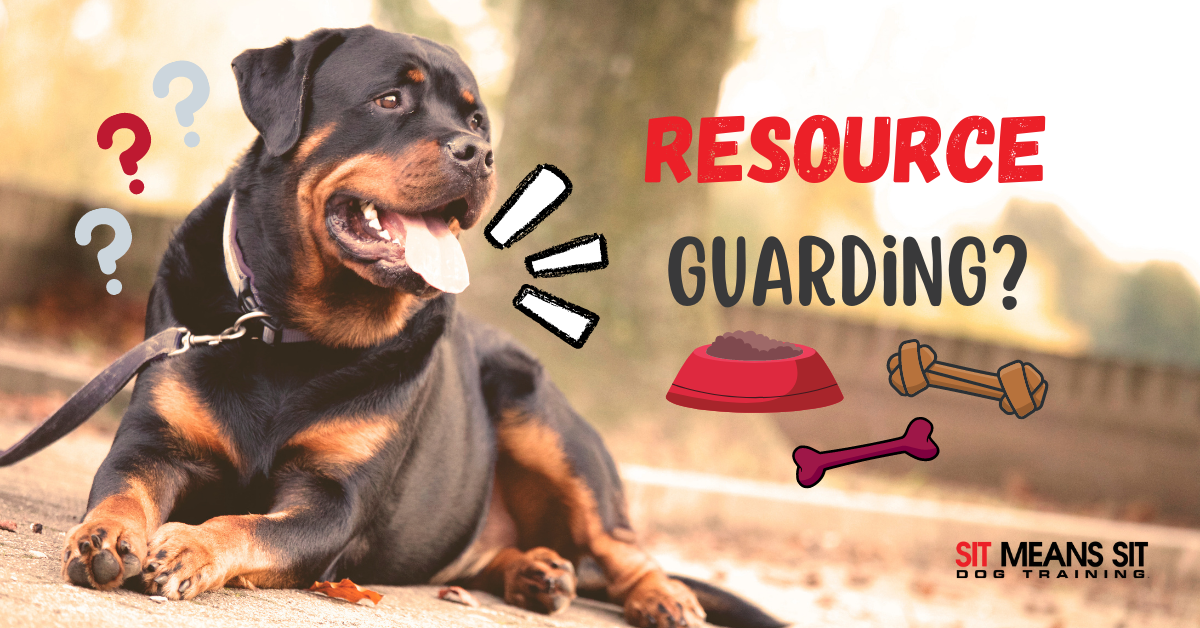
Resource Guarding: What It is and How to Stop Your Dog from Doing It
Does your dog occasionally, or often, show signs of aggression like baring teeth or growling when you get close to their feeding bowls? Do they bark when you come near them while they’re chewing on a bone? Does your pooch nearly bite off your hand when you try and give them a treat or eat it in an unreasonably fast time? What you are experiencing is most likely the unfortunate behavior of resource guarding. This survival behavior shown in dogs is something that isn’t ideal to deal with, but here are some tips and tricks to help prevent it from happening.
What is Resource Guarding?
Resource guarding is various behaviors a dog shows in order to protect or convince others to steer clear of items they view as theirs, like food, toys, bones, items around the house, beds, people, other dogs, etc. The most common signs of this behavior are stiffening/shaking, growling, teeth-baring, quick or frantic eating, snapping, biting, barking, and shielding the resource. Many of these behaviors are combined when a dog is resource guarding. For example, a dog that is trying to protect its food may hover over the bowl eating frantically and growl if you come near.
A lot of the time, these behaviors are subtle and less aggressive. A pup may hide their toy and when you find it and try and play with them, they start barking. You may see this as excitement, but it could be a form of subtle resource guarding. Remember, resource guarding is unique in its display with every dog that has the behavior, so your pooch may guard more gently or more aggressively.
Preventing Resource Guarding Behaviors
If your furry friend is a resource guarder, you may find it really frustrating to deal with and be at a loss for solutions. But don’t worry, resource guarding is something you can work on to change in your dog.
Dogs guard in order to protect what they find valuable and in most situations, the valuable thing is food (e.g. food bowls, bones, etc.)! To help with this issue, try beginning to teach your dog to be excited or happy when someone approaches their item of value. Many people find this easiest to do when using a positive reinforcement system with treats. Try walking near the item of value (i.e. bowl) and toss a treat in it or near it. When your dog is used to this cycle, try and walk the treat over to the item instead of tossing it. Be sure to touch the bowl/item quickly and deliver the treat so your dog doesn’t potentially feel threatened by your actions.
Try not to just go in suddenly and grab for the bowl or item as this may trigger a poor reaction in your dog. Controlling or promoting your dominance over their food too quickly (when switching behavior patterns) can do the opposite of prevention and make your dog more eager to guard.
Another strategy for promoting control is to do a tradeoff. Instead of teaching your dog to give something to you by taking it, try trading off the item for a treat so they feel rewarded and not threatened by losing the object.
Stopping Guarding
Giving your pooch some extra treats can help with easing behaviors and getting them to feel happier about others approaching their valuables. Giving your dog space and handing off treats as you get increasingly closer will ease the threat felt by your pup. Work in small to high-intensity levels only as your dog grows more comfortable with you approaching. If your pup shows signs of aggression or distress, cool down the situation by backing off.
Resource guarding prevention and stopping can be exhausting and frustrating for both you and your furry friend. But, it is fixable with time and training. Don’t give up on your pup as behaviors are changeable. Be patient during the process and don’t forget to remain calm!
